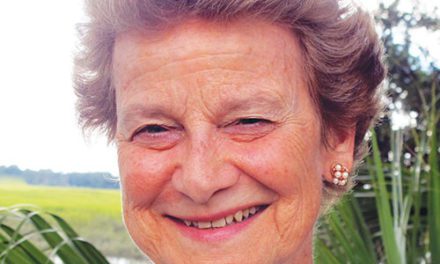 Though the exact date of the origin of meditation is unknown, archaeologists and scholars agree that the practice has been around for at least 5,000 years. Chances are slim that anything without credibility would have survived for that length of time.
Though the exact date of the origin of meditation is unknown, archaeologists and scholars agree that the practice has been around for at least 5,000 years. Chances are slim that anything without credibility would have survived for that length of time.
As more and more people these days discover the health benefits of this once-purely-Eastern discipline, Western medicine has begun to embrace it as an important component of a healthy lifestyle.
My own practice recently passed the four-year mark. I try for daily quiet time, and usually end up with almostdaily. Not that I hadn’t given meditation a try in the past. I had. Numerous times. At spiritual retreats and Buddhist centers. In the ‘70s I even read the Ram Dass classic, Journey of Awakening: A Meditator’s Guidebook,and rocked with the practice for a good three months. But I never stuck with any of those experiences long enough to make daily meditation a habit. Until a friend suggested I sign up online for one of Deepak Chopra’s free 21-Day Meditation Challenges. The word “free” appealed, so I did that. And I liked it because I finally really gotit.
What I got was the fact that in order to commit to a meditation practice, all you have to do is to show up. Really. Just that, and do your best to focus on your breathing and quiet your mind. For a long time I assumed that if I didn’t “feel” light and wonderful – i.e. all woo-woo – every minute, I must be doing it wrong. And that would be enough to make me give up and think I couldn’t do it, that I simply wasn’t a meditator. I’ve heard a number of people say, “Oh, I could never keep still that long.” Or “I can’t stop thinking.” Or “I tried it once and got bored.”
Experience has taught me that meditation is a lot easier than you might think. A recent issue of the everything-good-for-you, small-format magazine Preventionfeatured an article that busted a few myths about meditation. If you’ve tried the practice and sworn it off, read on and see if you recognize any of the following loosely-translated excuses . . . er . . . reasons.
The first is a belief that you have to sit cross-legged on the floor and hold that special position. You think that if your body can’t do that, well, you’ve failed. In fact, you can sit in a chair or on the floor, lie down, stand, or walk while meditating. Once at a Taos NM writing workshop, Natalie Goldberg, talented author of Writing Down the Bones, had our class do a 20-minute walking meditation outdoors right after lunch, when the sleepies tend to settle in. We all returned to class completely refreshed, as if we’d had a short nap. Being in as quiet a place as possible is the key. If quiet can’t be found, a number of apps provide instructions and guided meditations you can listen to on headphones. More on this later.
The second myth is that you don’t have time in your busy life to meditate. Research shows that 10-minute sessions can heighten your focus and memory and even really short periods can help you cope better. I have a friend who teaches school and gets up at 5 a.m. in order to meditate before facing her first graders. She says it’s worth it. Gives her an edge on the day. When a stressful situation arises, she’s usually able to take a few seconds to step back and see the truth of it, then respond, instead of reacting immediately. My experience has been the same, even though I only have to face my laptop and not all those little faces.
The third fallacy is that in order to meditate, you must be spiritual. Though the practice has been associated with some religious practices, such as Buddhism, it’s simply a way to clear your focus and find serenity by giving yourself time to breathe and quiet your mind. And well worth it. The health benefits of meditation include relief of stress and anxiety, development of concentration, reduction of inflammation in myriad areas of the body, beneficial to medical conditions such as inflammatory bowel disease, heart disease and migraine; improvement of depression and contribution to a positive outlook on life, lengthened attention span, possible reduction of age-related memory loss and dementia, generation of kindness, easing of addictions, improved quality of sleep, aid in controlling chronic pain, and decreased blood pressure.
Read those over again if that coerces you into giving meditation another try!
The next myth is that some folks just aren’t good meditators. It’s all about the belief that your mind must be completely blank in order to do it right. Not so. Buddhists even have a name for the tendency of the mind to wander. They call it “monkey mind,” and believe me, I have days that seem to be total monkey mind. While meditating, whenever you notice that thoughts are sneaking in, simply acknowledge those thoughts, gently send them away, and re-focus on your breath. There is no such thing as perfect meditation. That’s why they call it a “practice.”
The final misconception mirrors a few aspects of what’s already been discussed, and that is, there’s a rightway to do it. Which there is not. The styles of meditation are many. A teacher can guide you through visualizations or affirmations. You can use a word or phrase, i.e. a mantra, either silently or out loud, to help find your inner focus. You’ve probably heard of one popular mantra, “Ohm.” In his aforementioned online series, Deepak Chopra uses insightful quotes, guided meditations, and Sanskrit mantras at the beginning of a 20-minute meditation.
The practices of tai chi, yoga and chi gong incorporate meditation with movement. The goal of all of these is to help you learn to stay more present day-to-day in your life and to improve aspects of your physical and mental health.
According to www.healthline.com, some of the best meditation apps for 2019 include The Mindfulness App, Headspace, Calm, buddhify, Sattva, Breethe, and Stop, Breathe & Think. Check out that website for specific info on these and more. Find videos of Deepak Chopra and other talented leaders on how to get started with meditation on www.youtube.com. Hone in on one that appeals to you, take a few slow, deep breaths, and begin.
Your body, mind and spirit all will thank you.
“A self that goes on changing is a self that goes on living.” – Virginia Woolf






